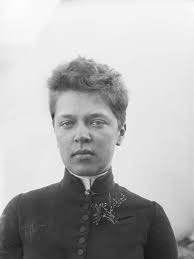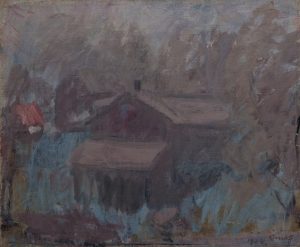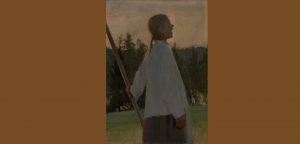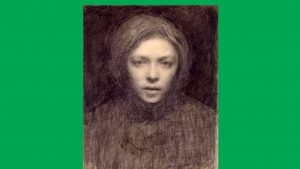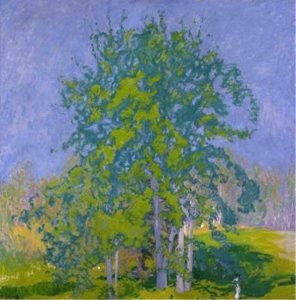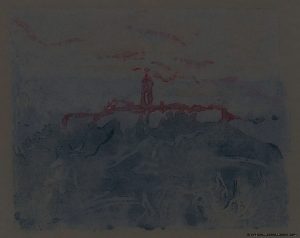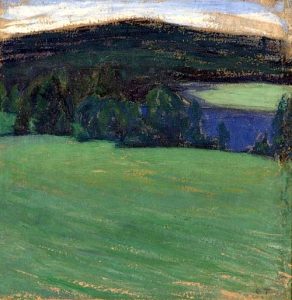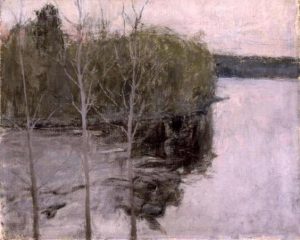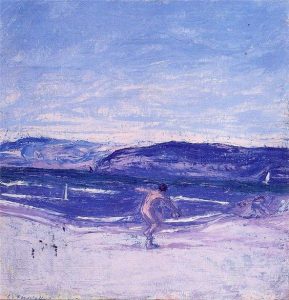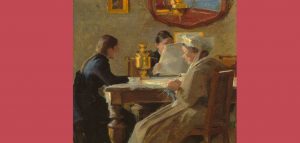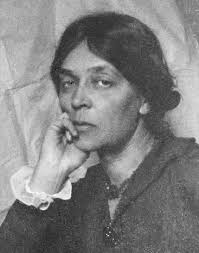Ellen Thesleff was born on October 5 in 1869 in Helsingfors, Finland.
1869 - 1954
Ellen Thesleff
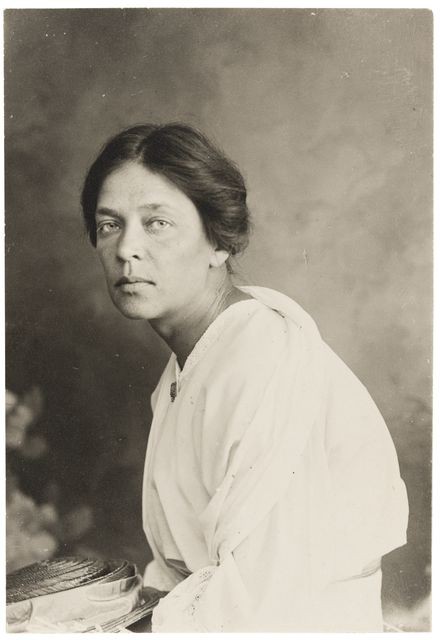
description
A Finnish artist and graphic artist, a bright representative of Symbolism and one of the first expressionists in the country.
Ellen was born into a family of a major official. Her first teacher was her father, and he shared his knowledge with his six children. Considering the talent of his daughter, he supported her studies in private official schools of painting. An endless source of inspiration for the artist was Italy and the works of such outstanding masters as Michelangelo, Leonardo da Vinci and Botticelli. Italy was the spiritual home of the artist. Here she spent most of her time regularly visiting the country for 45 years. Ellen Tesleff said that only in Italy she was able to understand the true nature of light, how it lays down on objects, how it animates everything around. In Tuscany and Florence, most of her landscapes were created they later became more expressionistic.
Ellen Tesleff was an innovative artist. During her long career, she tried a variety of artistic methods and styles, but always remained true to her own romantic and emotional manner. The great merit of the artist is to popularize European art in Finland. Together with his companion and friend Magnus Enckell, she became the founder of the art group “Septem”, which contributed to the development of avant-garde painting in Scandinavia.
Key ideas:
– Ellen Thesleff paid most attention to the color and expressive power in her works. At the beginning of her career, the color of her work was quite ascetic and even monochrome. Portraits, covered with a soft haze, evoke associations with the paintings by Eugene Carriere by their mystery and lyricism.
– After the artist traveled to Italy and got to know modern art, her style underwent great changes. The colors of her paintings became more saturated, and the characters were emotionally expressive.
– Paintings by Thesleff are mostly portraits and landscapes. In the second half of her creative path, the artist increasingly turned to graphics, repeating the themes of her paintings in lithographs.
– Her pictures do not have plots, they rather reflect feelings, create images and convey mood, than display real events. Over time, the artist developed her own individual style – poetic and fantastic, directed into the depths of the human inner world. The artist’s style was much closer to the art of Europe than the painting of her Finnish colleagues and contemporaries.
1869
1885
1891
1892
1894
1898
1900
1909
1933
1951
1954
The birth of the artist
She began her studies at the private art academy in Helsinki
She began her studies at the private art academy in Helsinki, and from 1887 – at the School of Drawing of the Finnish Association of Arts.
"Echo"
Her painting “Echo” attracted the attention of Finnish art critics at the Autumn Exhibition in Helsinki. In the same year, the artist went to Paris, where she continued her studies at the Academy of Colarossi.
The pictures and drawings had dark shades and melancholic plots
Hardly surviving the death of her father, she left painting for several years. When she started painting again, the pictures and drawings had dark shades and melancholic plots. The most striking example is the “Self-portrait”, created around 1895.
Went to Italy
Went to Italy, which captivated Thesleff with its nature and works of old masters. The artist visited Rome, Florence and Naples, studying the immaculate art of Masaccio and Fra Angelico. Italy was the greatest source of her inspiration for the whole life.
She sold her villa in Finland
She sold her villa in Finland and built her own house on the beach of Casa Bianca in Italy on her own project. This house became her main refuge and work place.
The artist received a bronze medal
At the World Paris Exhibition, the artist received a bronze medal, met W. Kandinsky.
Until 1912, she lived and worked in Finland again
Until 1912, she lived and worked in Finland again, where her favorite places were Murolesi (Ruovesi) and Helsinki.
Worked at the studio of the artist Lallukk in Helsinki
Worked at the studio of the artist Lallukk in Helsinki. In the late period, she created vivid works in the style close to Expressionism.
"Pro Finlandia"
Received the highest state award of Finland for artists – medal “Pro Finlandia”. In 1952, the artist suffered a serious injury, after being hit by a tram.
The death
She died on January 12 in 1954 in Helsinki, Finland.

